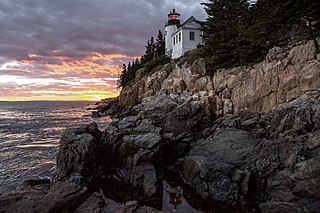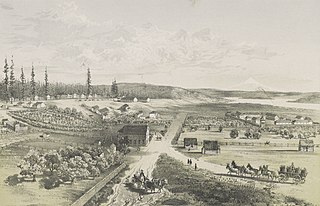| Years in Sweden: | 1634 1635 1636 1637 1638 1639 1640 |
| Centuries: | 16th century · 17th century · 18th century |
| Decades: | 1600s 1610s 1620s 1630s 1640s 1650s 1660s |
| Years: | 1634 1635 1636 1637 1638 1639 1640 |

Events from the year 1637 in Sweden
| Years in Sweden: | 1634 1635 1636 1637 1638 1639 1640 |
| Centuries: | 16th century · 17th century · 18th century |
| Decades: | 1600s 1610s 1620s 1630s 1640s 1650s 1660s |
| Years: | 1634 1635 1636 1637 1638 1639 1640 |

Events from the year 1637 in Sweden
| | This section needs expansion. You can help by adding to it. (July 2015) |
| | This section needs expansion. You can help by adding to it. (July 2015) |
| | This section needs expansion. You can help by adding to it. (July 2015) |

Acadia National Park is an American national park located along the mid-section of the Maine coast, southwest of Bar Harbor. The park includes about half of Mount Desert Island, part of the Isle au Haut, the tip of the Schoodic Peninsula, and portions of sixteen smaller outlying islands.

The Jamestown settlement in the Colony of Virginia was the first permanent English settlement in the Americas. It was located on the northeast bank of the James River, about 2.5 mi (4 km) southwest of present-day Williamsburg. It was established by the London Company as "James Fort" on May 4, 1607 O.S., and considered permanent, after brief abandonment in 1610. It followed failed attempts, including the Roanoke Colony, established in 1585. Despite the dispatch of more supplies, only 60 of the original 214 settlers survived the 1609–1610 Starving Time. In mid-1610, the survivors abandoned Jamestown, though they returned after meeting a resupply convoy in the James River.

The National Park Service (NPS) is an agency of the United States federal government, within the U.S. Department of the Interior. The service manages all national parks; most national monuments; and other natural, historical, and recreational properties, with various title designations. The United States Congress created the agency on August 25, 1916, through the National Park Service Organic Act. Its headquarters are in Washington, D.C., within the main headquarters of the Department of the Interior.

Craters of the Moon National Monument and Preserve is a U.S. national monument and national preserve in the Snake River Plain in central Idaho. It is along US 20, between the small towns of Arco and Carey, at an average elevation of 5,900 feet (1,800 m) above sea level.

Capitol Reef National Park is an American national park in south-central Utah. The park is approximately 60 miles (100 km) long on its north–south axis and just 6 miles (10 km) wide on average. The park was established in 1971 to preserve 241,904 acres of desert landscape and is open all year, with May through September being the highest visitation months.

Petroglyph National Monument stretches 17 miles (27 km) along Albuquerque, New Mexico's West Mesa, a volcanic basalt escarpment that dominates the city's western horizon. Authorized June 27, 1990, the 7,236 acres (2,928 ha) monument is cooperatively managed by the National Park Service and the City of Albuquerque. The western boundary of the monument features a chain of dormant fissure volcanoes. Beginning in the northwest corner, Butte volcano is followed to its south by Bond, Vulcan, Black and JA volcanoes.

The Chesapeake and Ohio Canal National Historical Park is located in the District of Columbia and the state of Maryland. The park was established in 1961 as a National Monument by President Dwight D. Eisenhower to preserve the neglected remains of the Chesapeake and Ohio Canal and many of its original structures.

Fort Vancouver National Historic Site is a United States National Historic Site located in the states of Washington and Oregon. The National Historic Site consists of two units, one located on the site of Fort Vancouver in modern-day Vancouver, Washington; the other being the former residence of John McLoughlin in Oregon City, Oregon. The two sites were separately given national historic designation in the 1940s. The Fort Vancouver unit was designated a National Historic Site in 1961, and was combined with the McLoughlin House into a unit in 2003.

Pipestone National Monument is located in southwestern Minnesota, just north of the city of Pipestone, Minnesota. It is located along the highways of U.S. Route 75, Minnesota State Highway 23 and Minnesota State Highway 30. The quarries are culturally significant to 23 tribal nations of North America. Those known to actually occupied the site chronologically are the Yankton Dakota, Iowa, and Omaha peoples. The Quarries were considered a neutral territory in the historic past where all tribal nations could quarry stone for ceremonial pipes. The catlinite, or "pipestone", is traditionally used to make ceremonial pipes. They are vitally important to Plains Indian traditional practices. Archeologists believe the site has been in use for over 3000 years with Minnesota pipestone having been found in ancient North American burial mounds across a large geographic area.

The Gettysburg National Military Park protects and interprets the landscape of the Battle of Gettysburg, fought over three days between July 1 and July 3, 1863, during the American Civil War. Located in Gettysburg, Pennsylvania, the park is managed by the National Park Service.

Saint-Gaudens National Historical Park in Cornish, New Hampshire, preserves the home, gardens, and studios of Augustus Saint-Gaudens (1848–1907), one of America's foremost sculptors. The house and grounds of the National Historic Site served as his summer residence from 1885 to 1897, his permanent home from 1900 until his death in 1907, and the center of the Cornish Art Colony. There are three hiking trails that explore the park's natural areas. Original sculptures are on exhibit, along with reproductions of his greatest masterpieces. It is located on Saint-Gaudens Road in Cornish, 0.5 miles (0.80 km) off New Hampshire Route 12A.

The Statue of Liberty National Monument is a United States National Monument comprising Liberty Island and Ellis Island in the U.S. states of New Jersey and New York. It includes the 1886 Statue of Liberty by sculptor Frédéric Auguste Bartholdi and the Statue of Liberty Museum, both situated on Liberty Island, as well as the former immigration station at Ellis Island which includes the Ellis Island Immigrant Hospital.

The National Park Service Organic Act, or simply "the Organic Act" as referred to within the National Park Service, conservationists, etc., is a United States federal law that established the National Park Service (NPS), an agency of the United States Department of the Interior. The Act was signed into law on August 25, 1916, by President Woodrow Wilson. It is codified in Title 54 of the United States Code.

James Preston Delgado is an American maritime archaeologist, historian, maritime preservation expert, author, television host, and explorer. Delgado is a maritime archaeologist with over four decades of experience in underwater exploration. He has participated in over 100 shipwreck investigations worldwide, including notable sites such as the RMS Titanic, USS Independence (CVL-22), USS Conestoga (AT-54), USS Monitor, USS Arizona (BB-39), USS Nevada (BB-36), Sub Marine Explorer, the buried Gold Rush ships of San Francisco, the atomic bomb test fleet at Bikini Atoll, the slave ship Clotilda, and Kublai Khan's lost fleet from the Mongol invasions of Japan.

Coldwater Spring is a spring in the Fort Snelling unorganized territory of the U.S. state of Minnesota, that is considered a sacred site by the Dakota people, and was also the site of the U.S. Army's Camp Coldwater for troops that constructed Fort Snelling. Coldwater Spring is located on the west bluffs of the Mississippi River directly south of Minnehaha Park and adjacent to Fort Snelling State Park. Waters from the naturally occurring spring flow continuously year round and remain unfrozen in winter months. The spring and surrounding area is managed as a protected historic site and natural park by the National Park Service as part of the Mississippi National River and Recreation Area.

Harriet Tubman National Historical Park is a US historical park in Auburn and Fleming, New York. Associated with the life of Harriet Tubman, it has three properties: the Harriet Tubman Home for the Aged, in Auburn; the nearby Harriet Tubman Residence, just across the city/town line in Fleming; and the Thompson A.M.E. Zion Church and parsonage in Auburn. They are located at 180 and 182 South Street and 47–49 Parker Street, respectively. The A.M.E. Zion Church unit is administered by the National Park Service (NPS), and the South Street properties, including a historic barn and a visitor center, are jointly managed and operated by both the NPS and the Harriet Tubman Home, Inc. The church also works with the NPS in park operations. The Harriet Tubman Grave, in nearby Fort Hill Cemetery, is not part of the park.

Arches National Park is a national park in eastern Utah, United States. The park is adjacent to the Colorado River, 4 mi (6 km) north of Moab, Utah. The park contains more than 2,000 natural sandstone arches, including the well-known Delicate Arch, which constitute the highest density of natural arches in the world. It also contains a variety of other unique geological resources and formations. The national park lies above an underground evaporite layer or salt bed, which is the main cause of the formation of the arches, spires, balanced rocks, sandstone fins, and eroded monoliths in the area.

Although the culture of Idaho is reflective of the broader culture of the United States to some extent, some of the forces that have shaped the more distinctive aspects of the Idaho culture are ethnographic, geographic, and historical in nature. Additionally, the culture of Idaho is reflected in the state's symbols, traditions, stories, art, and cuisine.